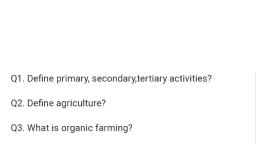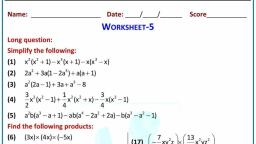Question 7 :
When electric field is applied, the cathode rays bend towards :
Question 8 :
Which of the following is correct about the electron sea model?
Question 11 :
An oil drop has $6.39 \times 10^{-19}\ C$ charge. What will be the number of electrons in this drop?
Question 12 :
The ratio of the "e/m" (specific charge ) values of a electron and an $\alpha- $ particle is :
Question 16 :
Through the body of every person, millions of tiny particles pass through silently every second. What are these particles?
Question 18 :
Which of the following was the instrument used for the discovery of the electron?
Question 24 :
If ${ \Delta  }_{ f }{ H }^{ \ominus  } \quad of \quad ICl(g), Cl(g),\quad and\quad I(g)\quad is \quad 17.57, 121.34 \quad and \quad 106.96\quad J{ }^{ -1 }$, respectively. Then bond dissociation energy of I-Cl bond is:
Question 28 :
Given the following bond energies,<br/>$C-H\ =\ 414\ { KJ }/{ mol }$<br/>$C-Cl\ =\ 150\ { KJ }/{ mol }$<br/>$Cl-Cl\ =\ 243\ { KJ }/{ mol }$<div>$H-Cl\ =\ 432\ { KJ }/{ mol }$<br/>How much energy would be required in the reaction?<br/>${ CH }_{ 4\left( g \right)  }+{ 2Cl }_{ 2\left( g \right)  }\rightarrow { CH }_{ 2 }{ Cl }_{ 2\left( g \right)  }+{ 2HCl }_{ \left( g \right)  }$<br/></div>
Question 29 :
The shortest $O-O$ bond length in the following molecule is :
Question 30 :
If the bond dissociation energies of $XY,{X}_{2}$ and ${Y}_{2}$ (all diatomic molecules) are in the ratio of $1:1:0.5$ and $\Delta { H }_{ f }$ for the formation of $XY$ is $-200kJ{ mol }^{ -1 }$, the bond dissociation energy of ${X}_{2}$ will be:
Question 31 :
When $2s-2s, \ 2p-2p$ and $2p-2s$ orbitals overlap, the bond strength decreases in the order:
Question 33 :
$N_2$ and $O_2$ are converted into monoanions ${N}_2^-$ and ${O}_2^-$ respectively, which of the following statements is wrong? 
Question 34 :
Which of the following molecule has weakest ($p\pi - d\pi$) back bonding ?
Question 35 :
Assertion: $NH_{3}$ molecule is more polar compared to $NF_{3}$ molecule.<br/>Reason: Fluorine atoms are larger compared to hydrogen atoms.<br/>
Question 37 :
Both $N(SiH_3)_3$ and $NH(SiH_3)_2$ compounds have trigonal planar skeleton. Incorrect statement about both compounds is :
Question 38 :
Choose the correct order of bound strength by overlapping of atomic orbitals:





























